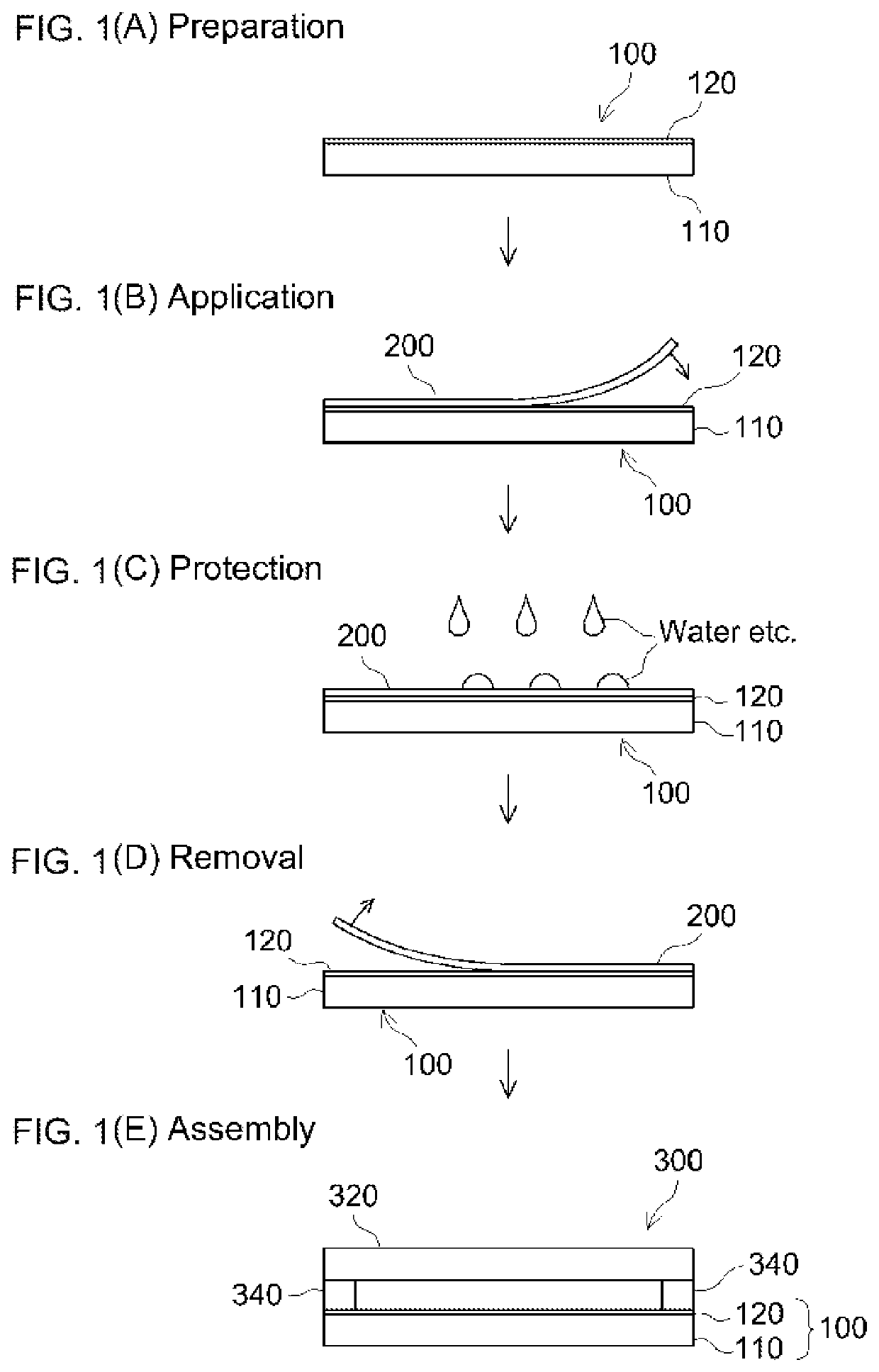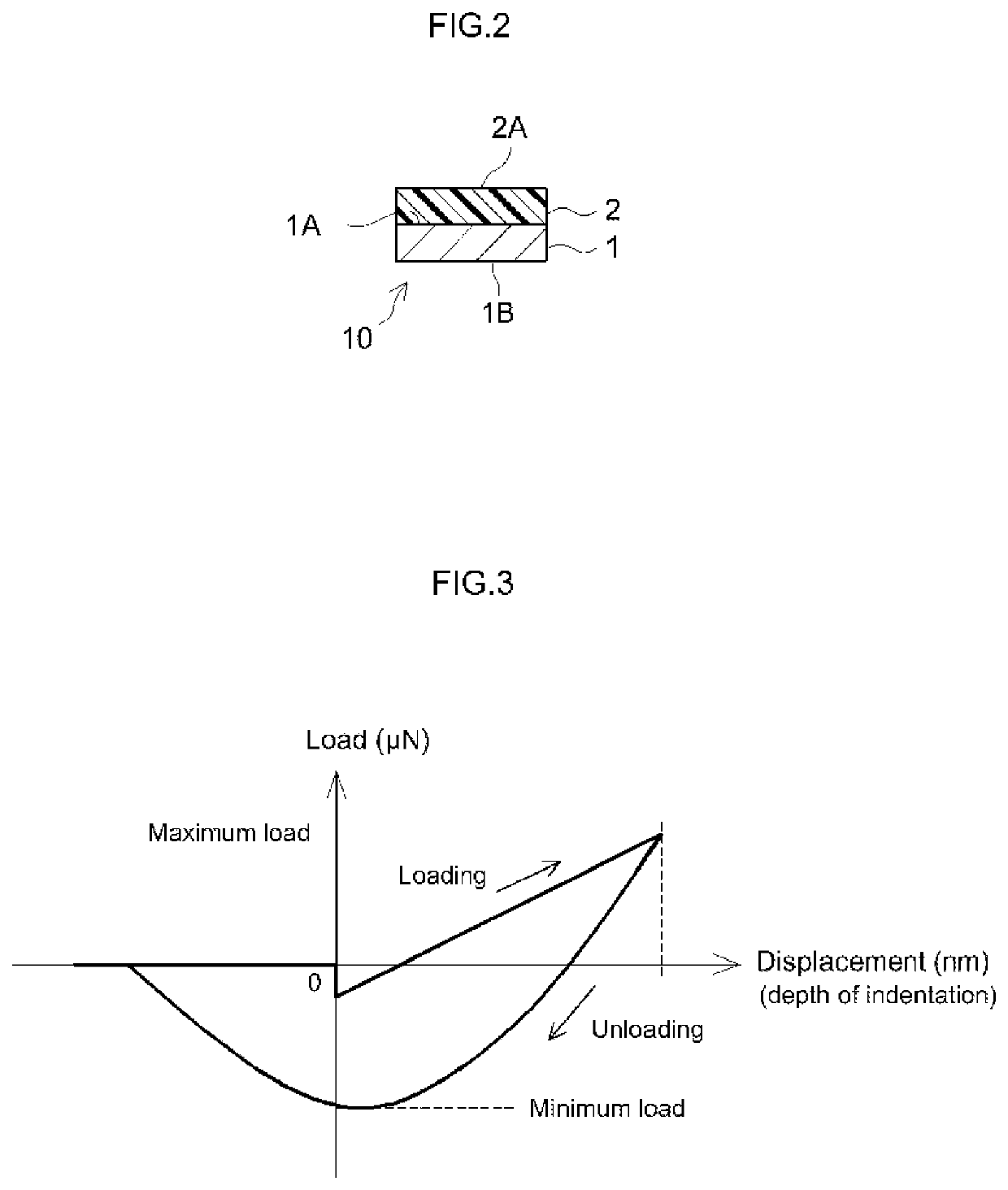Method for producing glass unit and pressure-sensitive adhesive sheet
a technology of adhesive sheet and glass unit, which is applied in the direction of film/foil adhesives, synthetic resin layered products, protective garments, etc., can solve the problems of reducing the adhesion strength of psa, enlarge the adhesive area of the protective sheet (psa sheet), and further to heavy peeling, so as to enhance the waterproofness at the surface, and increase the adhesion tightness
- Summary
- Abstract
- Description
- Claims
- Application Information
AI Technical Summary
Benefits of technology
Problems solved by technology
Method used
Image
Examples
example 1
[0183]Into a reaction vessel equipped with a stirrer, a thermometer, a nitrogen inlet, a condenser and an addition funnel, were placed 45 parts of 2-ethylhexyl acrylate (2EHA), 51 parts of n-butyl methacrylate (BMA) and 4 parts of 2-hydroxyethyl acrylate (HEA) as monomers as well as ethyle acetate as the polymerization solvent. The resulting mixture was allowed to stir under a nitrogen flow for two hours. Oxygen was thus eliminated from the polymerization system. Subsequently, was added 0.2 part of 2,2′-azobisisobutyronitrile and solution polymerization was carried out at 60° C. for 6 hours to obtain an acrylic polymer solution according to this Example.
[0184]To the acrylic polymer solution, for 100 parts of the acrylic polymer in the solution, was added 1.5 part of isocyanate-based crosslinking agent (product of Covestro, trade name DESMODUR RFE, tris(p-isocyanatophenyl)thiophosphate, 27% ethyl acetate solution) and mixed with stirring to prepare a PSA composition according to this...
example 2
[0186]The crosslinking agent was used in the amount shown in Table 1. Otherwise in the same manner as Example 1, a PSA composition according to this Example was prepared and a PSA sheet was fabricated.
example 3
[0187]Were mixed 92 parts of 2EHA, 4 parts of methyl methacrylate (MMA), 4 parts of acrylic acid (AA), 3 parts of emulsifier (based on non-volatiles), and 42 parts of ion-exchanged water. The resulting mixture was stirred with a homomixer to prepare an aqueous emulsion (monomer emulsion). As the emulsifier, was used a reactive anionic emulsifier (trade name AQUALON KH-1025, product of Dai-ichi Kogyo Seiyaku Co., Ltd.).
[0188]Into a reaction vessel equipped with a condenser, a nitrogen inlet, a thermometer and a stirrer, was placed 51.5 parts of ion-exchanged water; the resultant was stirred at room temperature for at least one hour while introducing nitrogen gas. Subsequently, the system was heated to 70° C.; 0.05 part of ammonium persulfate was added; and while stirring, the monomer emulsion was gradually added over three hours. After the completion of the addition of the monomer emulsion, the reaction mixture was continuously stirred at 75° C. for two hours and then cooled to 30° C...
PUM
| Property | Measurement | Unit |
|---|---|---|
| peel strength | aaaaa | aaaaa |
| glass transition temperature | aaaaa | aaaaa |
| glass transition temperature | aaaaa | aaaaa |
Abstract
Description
Claims
Application Information
 Login to View More
Login to View More - R&D
- Intellectual Property
- Life Sciences
- Materials
- Tech Scout
- Unparalleled Data Quality
- Higher Quality Content
- 60% Fewer Hallucinations
Browse by: Latest US Patents, China's latest patents, Technical Efficacy Thesaurus, Application Domain, Technology Topic, Popular Technical Reports.
© 2025 PatSnap. All rights reserved.Legal|Privacy policy|Modern Slavery Act Transparency Statement|Sitemap|About US| Contact US: help@patsnap.com



